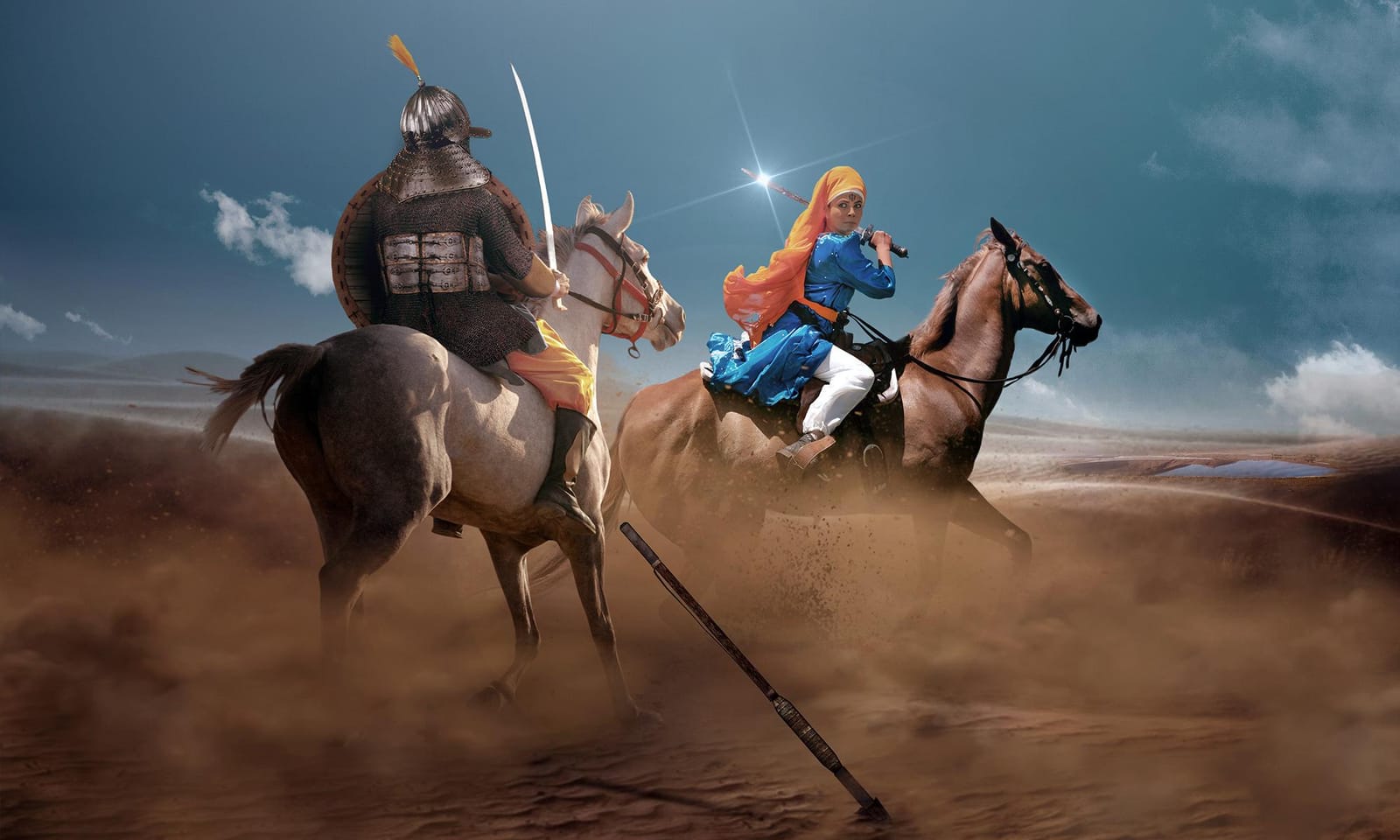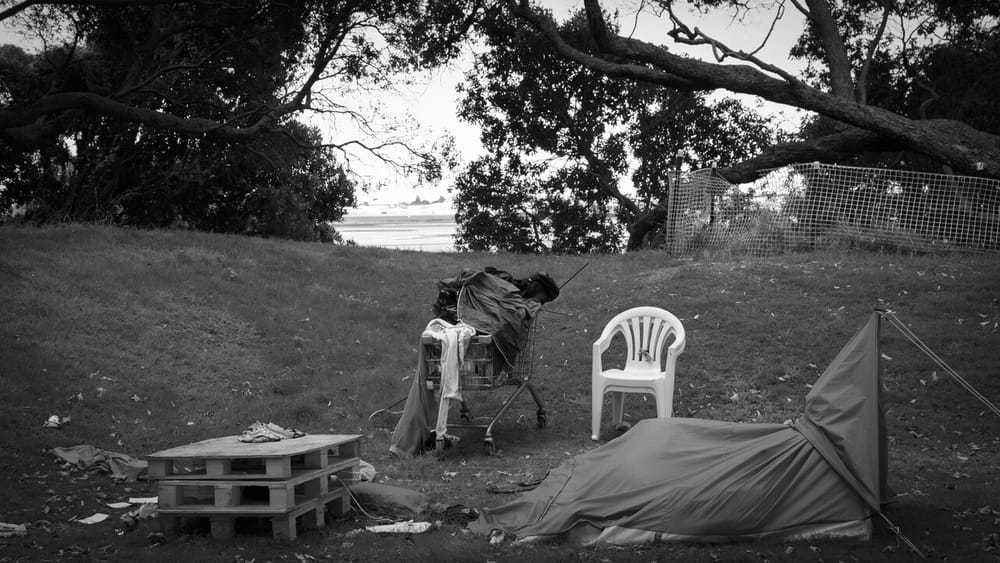Background: I teamed up with photographer Gabriella Morton to bring to life and explore the stories of five incredible Sikh women from history. I chose to cover this story out of curiosity for my Sikh heritage and its rich tapestry. Over the last few years, as the voices of People of Colour from around the world have gathered momentum, I have found in myself a power—a power that had been hidden away since I first arrived in New Zealand over 20 years ago. This power has led me on a journey to rediscover myself and my multi-layered ancestry—an ancestry that I have not always been proud of, an ancestry that I have, in the past, tried to wash White in an attempt to become the same as those who “othered” me. I imagine that right now, many immigrants just like me are finding their power too, as colonial thinking fades into the background and colourful stories take centre stage. I encourage all Indigenous, Black and People of Colour to tell their stories and the stories of their people with pride—it is our time to shine.
Credits
Makeup Artist: Jessica Lee Hunt
Horse: Finn Stylishly Dun from Shining N Stylish
Mata Khivi's setting: Takanini Gurdwara Sri Kalgidhar Sahib
Production Manager: Paul Stokes
This piece is dedicated to my late biji (grandmother), a true Punjabi storyteller. I still have fond memories of her lying with me and my sisters on a manja (Punjabi for woven outdoor bed) under the stars on our rooftop in India, telling us stories about the night sky—the mysterious yet revealing world beyond our atmosphere.
Throughout history, women have fought for and shaped the world we live in today; however, their stories have often been left on the sidelines. In this photo essay, we present you with five Sikh women who paved the way for a better future through their fight for social justice, gender equality and a more compassionate world.
Mata Khivi: founder of langar (free kitchen)
Langar is a free community kitchen found in gurdwaras across the world. It is a tradition of the Sikh faith, steeped in equality, compassion and sewa (service), inviting people of all backgrounds to come together to eat, regardless of religion, caste, colour, creed, age, gender or social status. Its origins date back to the 1500s when Guru Nanak, the revered founder of Sikhism, first initiated it. Over time, the tradition was lovingly nurtured and solidified by Mata Khivi, the wife of Bhai Lehna, Sikhism's second guru.
In 1519, 13-year-old Mata Khivi married 15-year-old Bhai Lehna, and they went on to have four children. At the time, both were followers of Hinduism, but their lives took an unexpected turn when they crossed paths with Guru Nanak and embraced the principles of Sikhism. Bhai Lehna not only adopted the faith but also devoted his life to its teachings. Recognising Bhai Lehna's dedication, Guru Nanak bestowed upon him the name Guru Angad, signifying "my own limb." After Guru Nanak's passing in 1539, Guru Angad assumed leadership of the Sikh faith. Mata Khivi's life became increasingly demanding as she stood steadfastly by her husband's side. Despite scepticism and doubts voiced by some in her village who believed Guru Angad might forsake her due to his newfound status as a holy man, Mata Khivi remained resolute in her support.
Among her numerous responsibilities, Mata Khivi had a passion for managing langar. She delighted in preparing delicious vegetarian meals for Guru Angad's visitors, particularly the community's children, whom she treated as her own. Over time, the langar came to be known as "Mata Khivi Ji da Langar" (Mata Khivi's langar), a testament to her commitment to its sustenance and institutionalisation.
The langar tradition has endured for over 500 years, and we owe its continuity to Mata Khivi, a compassionate Sikh woman who not only preserved this tradition but also passed down the knowledge of the Sikh way of life to the generations that followed.
Mai Bhago: warrior woman
Mai Bhago, the warrior who led Sikh troops in battle against invading Mughals in 1705 was an extraordinary woman. She was born in the village of Jhabal Kalan (present-day Amritsar district), India, and grew up to be a devoted Sikh and follower of Guru Gobind Singh, the 10th and final Sikh Guru.
In 1699, she travelled with her father, Malo Shah, from Jhabal Kalan to Anandpur, where she was initiated into the Khalsa, a group founded by Guru Gobind Singh for Sikhs who wanted to offer their life to sewa (service). After she was initiated, she told her father she wanted to stay in Anandpur, learn martial arts and become a sant sipahi (saint-soldier), but her father refused as women at the time did not partake in warfare. Back in Jhabal Kalan, Mai Bhago’s longing for martial arts and joining the Sikh Khalsa Army did not subside so her father ceded and taught her horse riding and the art of warfare.
Mai Bhago’s skills were put to use in 1705, during the Battle of Muktsar, when she heard that 40 Sikh soldiers from her region had deserted Guru Gobind Singh mid-battle and given him letters of bedava (abandonment of a Sikh from his Guru). Infuriated, Mai Bhago confronted the deserters, charging them with timidity and lack of faith. She then spread word about the desertion throughout her village and surrounding villages, telling people not to be hospitable to the cowards who disclaimed their guru. Mai Bhago was so committed to righting the soldiers’ wrongs that she even dressed herself in full armour, ready to go to battle alone. Seeing her dedication, the soldiers were both ashamed and inspired and decided to fight another day. With kirpans (daggers) re-strapped and kangas (combs) tightly sealed under their turbans, they hopped on their horses and galloped back to the battlefield in Anandpur, led by Mai Bhago.
The battle was won by the Sikhs and although all 40 soldiers who went back into battle that day died, the Sikh faith was able to live on. Mai Bhago was found lying wounded on the battlefield by Guru Gobind Singh and was later made his personal bodyguard.
Mai Bhago, the first Sikh warrior woman, defended her faith fiercely and taught the world about the rewards of being gender-inclusive.
Maharani Jind Kaur: the Sikh Empire’s first female leader
Maharani Jind Kaur was the first and last female leader of the Sikh Empire and a powerful force against British rule in India. She was born in 1817 in Chicharwali, a village in the Sialkot district of Punjab in what is now Pakistan. On her 18th birthday, her father Manna Singh Aulakh, a kennel keeper in the palace of Maharaja Ranjit Singh (the founder of the Sikh Empire), petitioned the maharaja to make Maharani Jind Kaur his wife. Maharani Jind Kaur’s beauty caught the 55-year-old maharaja’s eye and he agreed, making her his youngest wife.
In 1838, Maharani Jind Kaur and Maharaja Ranjit Singh had a son, Duleep Singh. Unfortunately, in 1839, just one year after Duleep Singh’s birth, Maharaja Ranjit Singh passed away. His death threw the state of Punjab into chaos and the British saw it as an opportunity to further strengthen their military force and inch their way towards Punjab, the only area on the Indian subcontinent that had not yet fallen under their rule. Four years later, after the assassination of Maharaja Ranjit Singh’s first three successors, five-year-old Duleep Singh became the Sikh Empire's youngest maharaja. Since he was too young to rule at the time, Maharani Jind Kaur took control of the Sikh Empire on his behalf.
In 1845, the British declared war against the Sikhs in an attempt to take control of the region. Maharani Jind Kaur defended Punjab’s position and sent the Sikh Army to meet British troops at the border. The battle (known as the First Anglo-Sikh War) was won by the British but they were still unable to control Punjab, thanks to its fierce female leader.
In 1846, tired of the rebellious maharani and her powerful influence over her people, the British replaced her by a Council of Regency. However, the patriotic maharani’s dedication to her region’s freedom did not falter and she continued to influence her people. In 1847, the British separated Maharani Jind Kaur from her son and imprisoned her in an attempt to break the revolt.
A year later, she escaped from imprisonment and found refuge in Nepal. A letter that she left for her British jailers upon escape paints a wonderful picture of this rebel queen: “You put me in a cage and locked me up. For all your locks and your sentries, I got out by magic . . . I had told you plainly not to push me too hard—but don’t think I ran away. Understand well that I escaped by myself, unaided . . . don’t imagine I got out like a thief.” While it was certainly a great escape, it did not stop the British from making their next move. In 1849, they annexed Punjab, incorporated it within British India, and deposed Maharaja Duleep Singh, who was placed under the guardianship of army surgeon John Spencer Logan and his wife, Lady Logan, to be assimilated and converted to Christianity. When he turned 15, Maharaja Duleep Singh was uprooted from Punjab and deported to England. There, he was presented to Queen Victoria, who immediately took a liking to him and took him under her wing. She described him as “handsome” with “a dignified manner.”
In 1861, after 11 years in asylum, the British no longer saw Maharani Jind Kaur as a threat and she was given permission to see her son. They reunited at Spence’s Hotel in Calcutta, after which they gained further permission to return to England together. Maharani Jind Kaur lived in Abingdon House, Kensington, until her death in 1863.
Maharani Jind Kaur, the powerful rebel queen who single-handedly showed the British what a mother would do for the love of her son and country.
Gulab Kaur: immigrant with a cause
Gulab Kaur, also known as Ghadri Gulab Kaur, was an Indian freedom fighter. She was born in 1890 in Bakshiwala, a small village in Punjab’s Sangrur district in India.
Gulab Kaur was married at a young age to a man from her village named Mann Singh. Soon after, she moved with him to Manila, Philippines, with the intention of ultimately migrating to the United States. However, the universe had other plans for Gulab Kaur and they did not include running away from the hardships caused by British rule in India or being a housewife.
In Manila, Gulab Kaur and Mann Singh came across the Ghadar Party, an organisation made up of mostly expatriate Punjabis dedicated to overthrowing British rule in India. The Ghadar Party was initially based in California but later spread to India and Indian diasporic communities around the world. Within the Ghadar, Gulab Kaur found her calling—to fight for Indian liberation.
In 1913, she officially joined the party and from there quickly became one of the movement’s core leaders, travelling across Manila to help spread the group’s message. As the role became more involved, she made the decision to move back to Punjab so she could play an active part in the rebellion against British rule. Her husband, while supportive of the party, decided to stick to their initial life path and moved to the United States.
Back in Punjab, Gulab Kaur, disguised as a journalist, distributed arms to Ghadarites in Kapurthala, Hoshiarpur and Jalandhar, mobilised masses and disseminated literature about the Indian freedom struggle far and wide. She was eventually found out, arrested by the British and imprisoned in Lahore’s Shahi Qila for two years, where she endured serious abuse and torture. Gulab Kaur did not let her time in prison dim her fire though; once she was released, she continued her revolutionary work with the Ghadar Party until her death in 1931.
Gulab Kaur, the Sikh freedom fighter fought for Indian independence until the very end.
Princess Sophia Duleep Kaur Singh: a royal socialite-turned-activist
Princess Sophia Duleep Singh was a suffragette and leading campaigner for women’s rights in the United Kingdom. She was born in Central London in 1876 and was brought up among the British aristocracy. Her heritage was remarkable: Maharaja Duleep Singh, the last maharaja of the Sikh Empire, who was dethroned as a young boy and exiled to England by the British Raj, was her father; Bamba Muller, the daughter of an Ethiopian slave, was her mother; Maharani Jind Kaur, the Sikh Empire's first female leader, was her grandmother; and Queen Victoria, who ruled between 1837 and 1901, was her godmother.
In 1886, at age of ten, Princess Sophia Duleep Singh faced upheaval as her father abandoned the family, relocating to Paris to be with his mistress, Ada Weatherill. Tragically, the following year, her mother succumbed to alcoholism. Stepping in, Queen Victoria assumed responsibility for Sophia and her sisters, officially recognising them as princesses in 1896. Queen Victoria held a particular fondness for Sophia, whom she "took under her wing."
In Paris, Maharaja Duleep Singh, Sophia's father, found his life spiraling out of control. He grappled with the legitimacy of the treaty forced upon him in childhood and relentlessly pursued the unattainable goal of reclaiming his lost throne. Ultimately, his fixation on regaining power led to his downfall, and in 1893, he passed away in Paris, destitute and alone.
After Maharaja Duleep Singh's death, Queen Victoria encouraged Princess Sophia Duleep Singh to become a socialite and granted her an apartment in Hampton Court as a grace and favour. While Princess Sophia Duleep Singh enjoyed the luxuries afforded to her and explored the life of a socialite—attending every notable social event and appearing in high-end magazines for her exquisite taste in fashion—she was eventually drawn to activism, in particular British women’s rights.
It is said that her passion for activism was sparked in 1903 when she went on a forbidden trip to India and attended the Delhi Durbar, an event that celebrated the succession of Edward VII and Alexandra of Denmark as Emperor and Empress of India. While in Delhi, she expected she would be treated like royalty the way she was in London but instead she was mostly ignored and blended into a crowd of brown faces. In Delhi she saw famine, poverty and suffering and the dark side of British rule in India. She returned to London a new woman and spent much of her adult life a suffragette, fighting for women’s voting rights. She attended meetings, joined demonstrations and led the famous Black Friday march of 1910 with Emmeline Pankhurst, the founder of the United Kingdom’s suffragette movement.
Princess Sophia Duleep Singh, the daughter of a man who woke up to Stockholm syndrome, the granddaughter of a maharani whose son was forcibly taken from her, the goddaughter of a sovereign whose empire committed widespread abuses, and a woman who used her complicated heritage to forge her own path—one dedicated to female empowerment.







